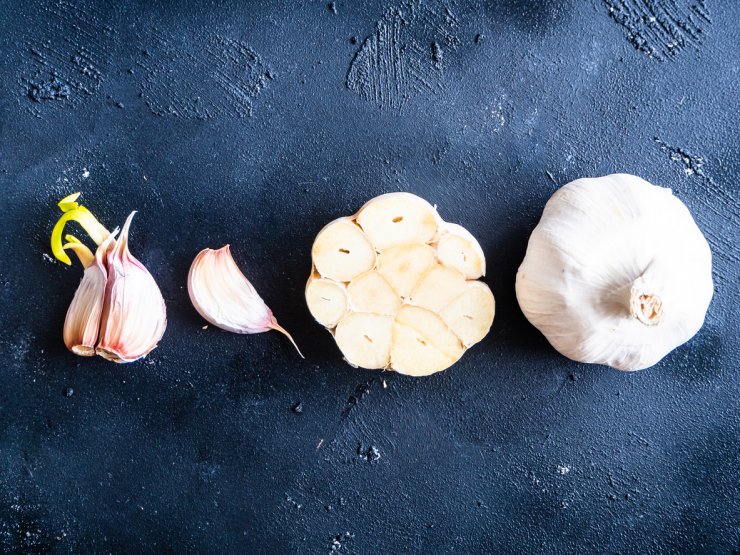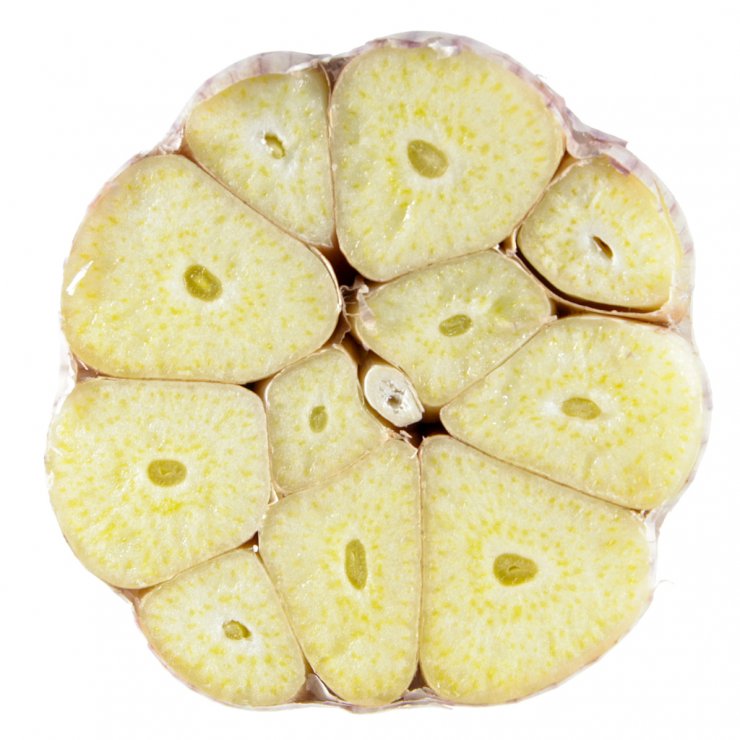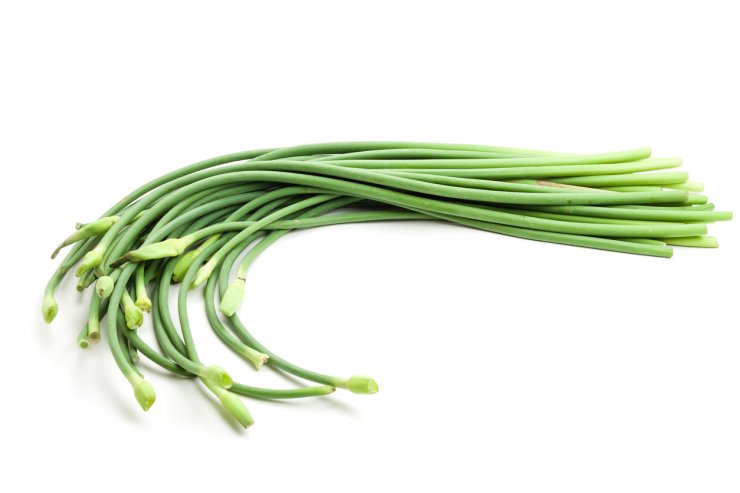Garlic is part of the onion family of plants, and there are two types: softneck (Allium sativum) and hardneck (Allium ophioscorodon).

Softneck garlic
Softneck Garlic
Softneck garlic has a long shelf life and it is the variety most often seen in grocery stores. The two common types of softneck garlic are artichoke and silverskin.
Artichoke garlic is so named because it resembles an artichoke, with its multiple layers—one bulb can contain up to 20 cloves. This type of garlic has thicker skin and is harder to peel than silverskin garlic.
Silverskin garlic is usually what you find in grocery stores, because it has a long shelf life—it’s been known to keep for up to a year. This type of garlic is easy to use in your kitchen, as it has thinner skin than artichoke garlic, which makes it easier to peel.
Silverskin garlic is also easy to grow; it does well in a wide variety of climates, from hot to cool and dry to humid. Seeds for silverskin garlic are widely available from garden centers and by mail-order.

Cross-section of hardneck garlic variety
Hardneck Garlic
One of the most common hardneck varieties of garlic is Rocambole, which produce large cloves that are easier to peel than other hardneck varieties. Rocamboles are popular with cooks worldwide. Rocambole garlic cloves have relatively loose skin, which is what makes them relatively easy to peel, but it also makes Rocambole varieties less shelf stable than their softneck silverskin cousins.
The other two types of hardneck garlic are porcelain garlic, which chefs recommend for baking; and purple stripe garlic, which is often mistaken for elephant garlic because its cloves are so large. Hardneck garlic is thought to have a richer flavor, but not everyone agrees; as with everything, it’s a matter of taste.

Elephant garlic next to standard garlic for scale
What About Elephant Garlic?
Some consider elephant garlic (Allium ampeloprasum) to be a third type of garlic, but it is actually related more closely to the leek. The flavor is very mild, tasting more onion-like than garlic-like.

Garlic Scapes
Garlic Scapes
Hardneck garlic produces scapes from its central stalk. Scapes are green extensions of the stalk that have a tight curl and a bulbil (swelling at the end of the stalk). The bulbils will produce flowers if left to mature, but most gardeners cut off the scapes to encourage the plant to focus its energy on creating a bigger garlic bulb.
Garlic scapes are a delicious ingredient on their own, so don’t throw them in the compost bin! See the recipe section for a yummy garlic scape stir fry.
What types of garlic have you tried growing? Why did you choose certain types to grow? Please share about your garlic growing experiences.


 Previous
Previous


I didn’t grow garlic this year, but several people in our community garden had. When the scapes grew tall they all seemed to ignore them so I asked for them. I was thrilled to be able to make a delicious spread by adding olive oil to the softest parts of the cut up scapes in the food processor, then adding parmesean cheese. Spread it on warm crusty bread for a mildly garlicky treat! I freeze it without the cheese and add the cheese later. A taste of the garden in the cold winter.
My Korean wife turns garlic stems into a delicious vegetable side dish. Much like a kimchi, the dish is less liquid and less salty preserving the stems natural firmness and flavor.